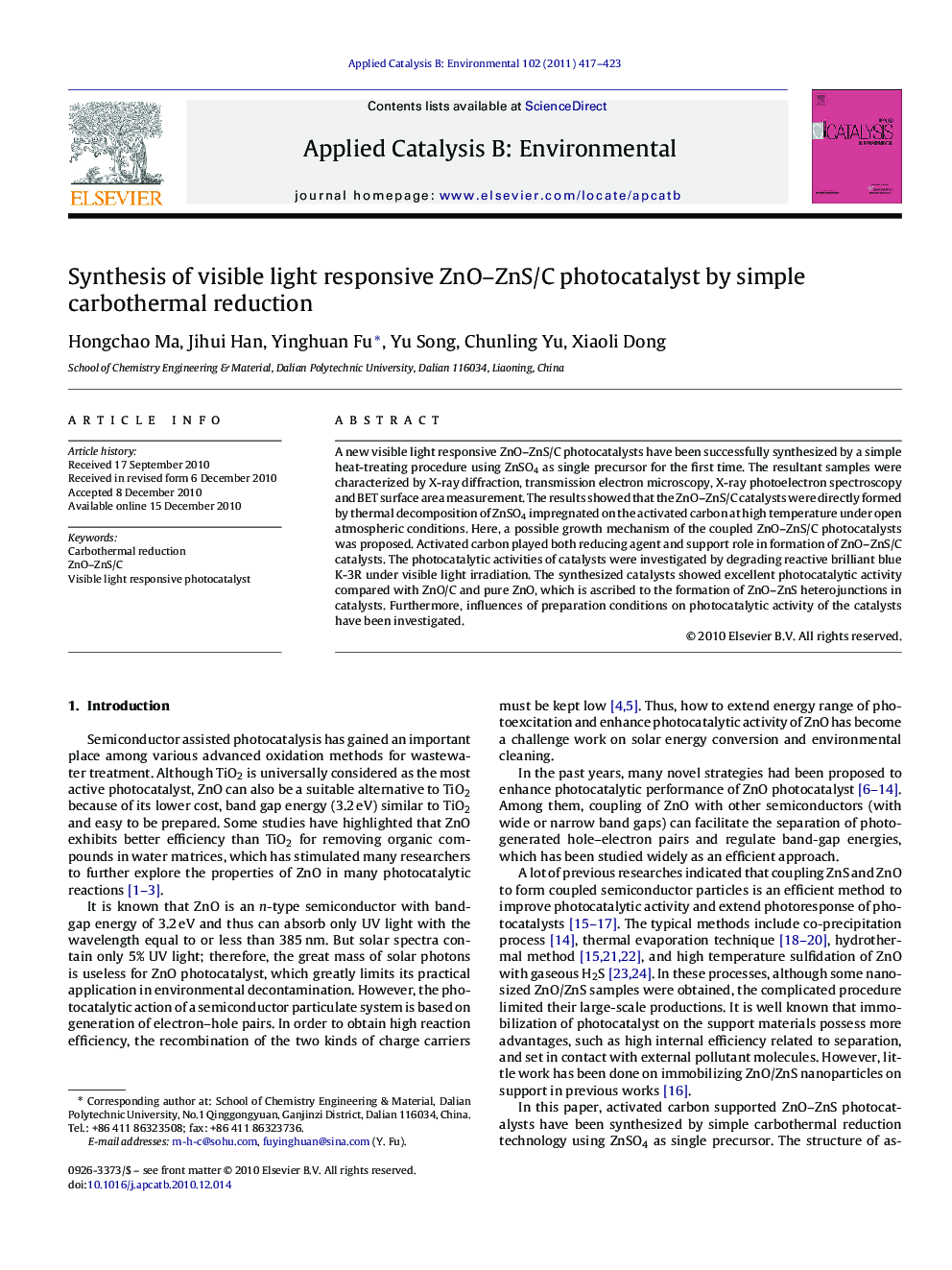| Article ID | Journal | Published Year | Pages | File Type |
|---|---|---|---|---|
| 47105 | Applied Catalysis B: Environmental | 2011 | 7 Pages |
A new visible light responsive ZnO–ZnS/C photocatalysts have been successfully synthesized by a simple heat-treating procedure using ZnSO4 as single precursor for the first time. The resultant samples were characterized by X-ray diffraction, transmission electron microscopy, X-ray photoelectron spectroscopy and BET surface area measurement. The results showed that the ZnO–ZnS/C catalysts were directly formed by thermal decomposition of ZnSO4 impregnated on the activated carbon at high temperature under open atmospheric conditions. Here, a possible growth mechanism of the coupled ZnO–ZnS/C photocatalysts was proposed. Activated carbon played both reducing agent and support role in formation of ZnO–ZnS/C catalysts. The photocatalytic activities of catalysts were investigated by degrading reactive brilliant blue K-3R under visible light irradiation. The synthesized catalysts showed excellent photocatalytic activity compared with ZnO/C and pure ZnO, which is ascribed to the formation of ZnO–ZnS heterojunctions in catalysts. Furthermore, influences of preparation conditions on photocatalytic activity of the catalysts have been investigated.
Graphical abstractFigure optionsDownload full-size imageDownload as PowerPoint slideResearch highlights▶ Coupled ZnO–ZnS was supported on activated carbon ▶ ZnSO4 as single precursor ▶ One step synthesis of coupled ZnO–ZnS by heat-treating under open atmospheric conditions. ▶ The activated carbon acted as reducing agent and support in the formation of ZnO–ZnS/C composite catalysts.
